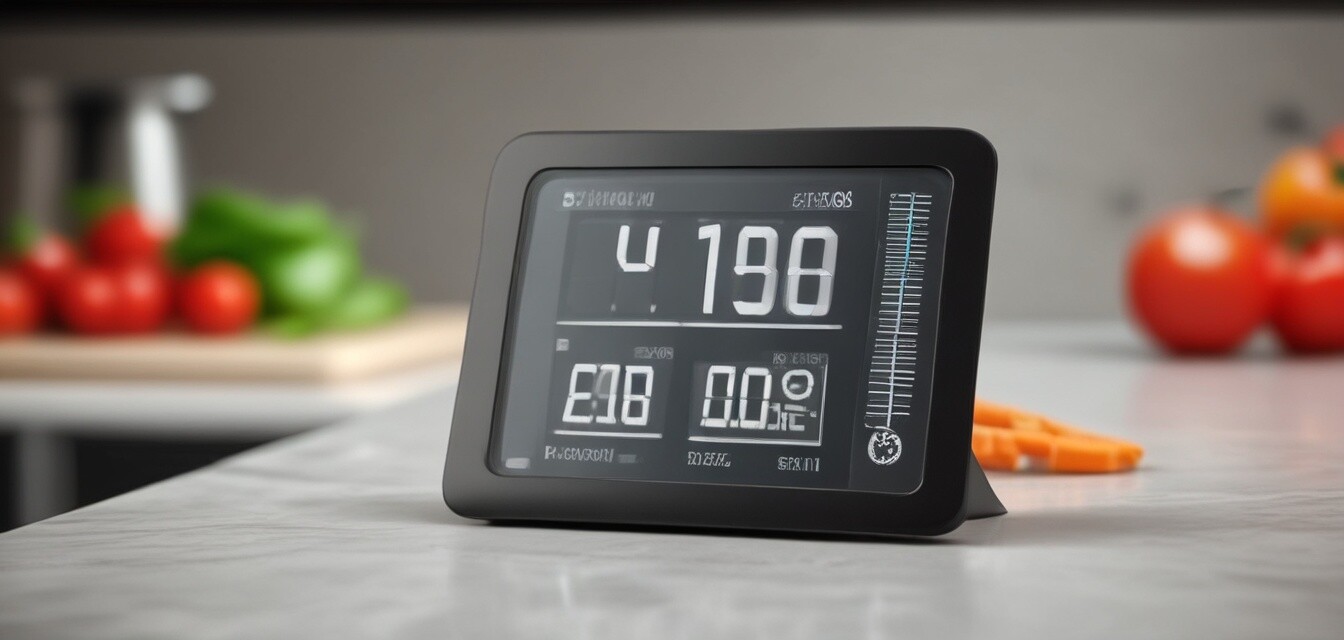
Essential Smart Cooking Thermometers for Precision
Key Takeaways
- Smart thermometers offer precise temperature readings for perfect cooking.
- Look for features such as Bluetooth connectivity, app integration, and alerts.
- Different models serve various cooking styles, ranging from grilling to sous vide.
- Understanding your needs will help you select the best model for your kitchen.
- Investing in a smart thermometer can elevate your cooking experience significantly.
When it comes to cooking, precision is key. Smart cooking thermometers take the guesswork out of achieving the perfect doneness in your meals. From grilled steaks to slow-cooked roasts, these innovative devices help ensure that your dishes are cooked to perfection every time. In this guide, we’ll explore the essential features to look for in smart cooking thermometers and provide tips on how to make the best choice for your kitchen needs.
Why choose smart cooking thermometers?
Smart cooking thermometers offer several advantages over traditional models. Here are some reasons why they’ve become a popular choice among culinary enthusiasts:
- Precision: Accurate temperature readings ensure your food is cooked perfectly.
- Convenience: Most smart thermometers are equipped with app connectivity for real-time monitoring.
- Alerts: Receive notifications when your food reaches the desired temperature.
- Versatility: Suitable for various cooking methods, including grilling, baking, and sous vide.
Key features to consider
When choosing a smart cooking thermometer, consider the following features:
| Feature | Description | Importance |
|---|---|---|
| Bluetooth/Wi-Fi connectivity | Allows you to connect to your smartphone for real-time updates. | High |
| App integration | Compatibility with cooking apps for temperature guides and alerts. | Medium |
| Multi-probe capability | Monitor multiple dishes simultaneously with multiple probes. | High |
| Temperature range | Broad temperature range for versatile cooking options. | High |
| Battery life | Long-lasting battery life ensures consistent performance. | Medium |
Comparing popular smart cooking thermometers
| Model | Connectivity | Temperature Range | Probes | Price |
|---|---|---|---|---|
| Thermoworks Smoke | Bluetooth | 32°F to 572°F | 1 | $99 |
| Meater Plus | Bluetooth/Wi-Fi | 32°F to 212°F | 1 | $99 |
| Inkbird IBT-4XS | Bluetooth | 32°F to 572°F | 4 | $69 |
| Pidgin Wireless | Wi-Fi | 32°F to 500°F | 2 | $159 |
Choosing the right thermometer for your cooking style
Identifying the best cooking thermometer will often depend on your cooking habits:
- If you grill often: Look for a thermometer with a high-temperature range and multiple probes for meats.
- If you love baking: Choose a thermometer that can provide accurate readings for different types of baked goods.
- If you use sous vide: Select one that integrates well with sous vide cooking techniques.
Conclusion
Smart cooking thermometers are essential tools that can greatly enhance your cooking capabilities. By choosing the right model based on its features and your cooking style, you're set to achieve accuracy and perfection in every dish. For more information on high-tech kitchen appliances, check out our Smart Kitchen Buying Guides section.
Pros
- Elevates cooking experience with precision cooking.
- Convenient alerts keep you updated without constant monitoring.
- Utilizes smartphone technology to streamline the cooking process.
Cons
- Can be more expensive than traditional thermometers.
- Some models may require an app to function fully.
Tips for beginners
- Familiarize yourself with the thermometer’s app and functionality before starting to cook.
- Invest in a model that has a user-friendly interface for easy navigation.
- Practice using the thermometer with different meats to understand its readings.
For more insightful information about kitchen technology trends, explore our Kitchen Technology News page.
Discovering the right smart cooking thermometer can open up new possibilities in the kitchen. By following this guide, you’ll be well on your way to mastering precision cooking.